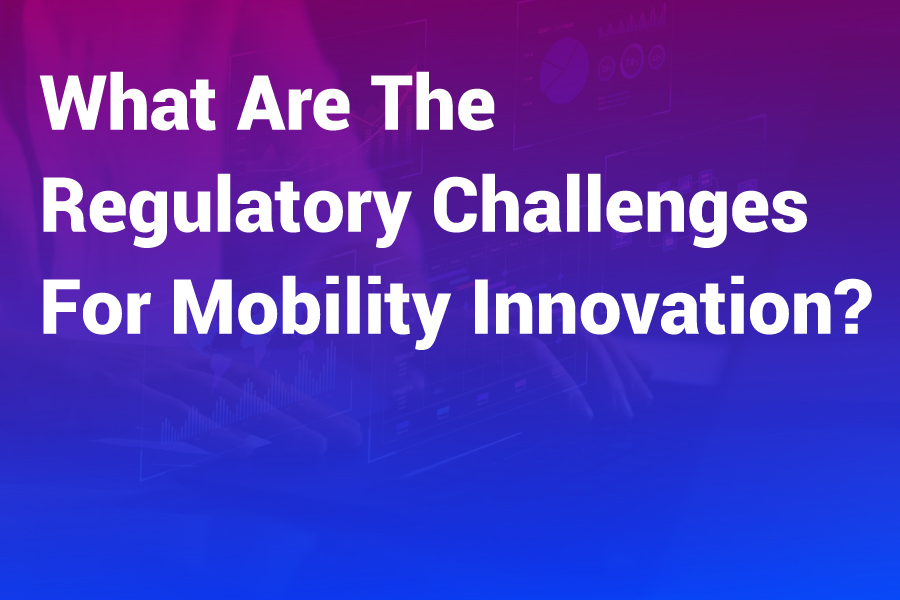
The mobility revolution is transforming how we move people and goods, from self-driving cars to delivery drones and e-scooters. These innovations promise tremendous benefits: reduced congestion, lower emissions, and increased accessibility. Yet behind the scenes of this technological leap, a complex web of regulatory challenges threatens to slow progress. Understanding what are the regulatory challenges for mobility innovation? has become essential for entrepreneurs, policymakers, and anyone invested in the future of transportation.
The Evolving Mobility Landscape
Mobility innovation is advancing at an unprecedented pace. Autonomous vehicles are navigating city streets, drones are delivering packages to remote locations, and micromobility options are redefining urban transportation. These technologies are developing far faster than the regulatory frameworks designed to govern traditional transportation systems.
This acceleration creates a significant gap between innovation and regulation. Laws written decades ago cannot adequately address the unique challenges posed by AI-driven vehicles or shared mobility platforms. As a result, innovators, regulators, and the public find themselves in uncharted territory, trying to balance safety and progress.
The Pace of Technological Change
The speed of mobility innovation presents one of the most fundamental regulatory challenges. Traditional regulatory processes move slowly, often requiring years of research, debate, and implementation. Meanwhile, technology companies can update their systems in weeks or even days.
This mismatch creates uncertainty for innovators who invest millions in developing technologies that may face unclear or changing regulations. According to [SOURCE: World Economic Forum], this regulatory uncertainty is one of the top barriers to mobility innovation adoption globally. Companies struggle to make long-term business plans when the rules governing their products remain in flux.
Data Privacy and Security Regulations
Mobility innovations collect unprecedented amounts of data. Autonomous vehicles gather detailed information about routes, driving behaviors, and even passenger conversations. Ride-sharing apps track precise location histories. This data collection raises significant privacy concerns and regulatory challenges.
Regulations like GDPR in Europe and CCPA in California establish strict requirements for data collection, storage, and usage. Mobility innovators must navigate these complex frameworks while building systems that rely on data to function effectively. The question of what are the regulatory challenges for mobility innovation? becomes particularly complex when balancing data utility with privacy protection.
Security Requirements and Compliance
Beyond privacy, mobility systems must meet stringent security regulations to prevent hacking and unauthorized access. A single security breach in an autonomous vehicle or traffic management system could have catastrophic consequences. Regulators are increasingly focused on establishing security standards, but these requirements often lag behind evolving threats.
Mobility companies must invest heavily in security measures to comply with current regulations while anticipating future requirements. This compliance burden can be especially challenging for startups with limited resources, potentially stifling innovation and competition in the mobility sector.
Safety and Certification Standards
Safety remains paramount in transportation, and regulatory bodies worldwide have established rigorous standards for traditional vehicles. However, these standards don’t always translate well to mobility innovations. How do you certify a vehicle that can learn and evolve its behavior over time? What safety tests are appropriate for drones that operate beyond visual line of sight?
These questions present significant regulatory challenges for mobility innovation. Traditional automotive safety standards rely on decades of crash data and human factors research. Autonomous systems operate differently, requiring new approaches to safety validation and certification.
Testing and Validation Challenges
Testing mobility innovations presents unique regulatory hurdles. Public road testing of autonomous vehicles requires special permits and insurance coverage. Drone operations face strict airspace regulations. These requirements, while necessary for safety, can slow the development and deployment of new technologies.
Regulators are experimenting with new approaches like sandbox environments and phased testing programs. These initiatives aim to balance safety concerns with the need for innovation. However, the patchwork of different testing requirements across jurisdictions creates complexity for companies operating in multiple markets. [LINK: Mobility Testing Standards] provides detailed information about navigating these regulatory landscapes.
Infrastructure and Urban Planning Regulations
Mobility innovations don’t exist in a vacuum—they require supportive infrastructure and urban environments. However, existing infrastructure regulations often assume traditional transportation models. Zoning laws may not accommodate charging stations for electric vehicles or docking stations for shared bikes. Traffic management systems may not integrate with autonomous vehicle networks.
These infrastructure-related regulatory challenges can significantly impact the deployment and effectiveness of mobility innovations. Even the most advanced technology will struggle to succeed if the regulatory environment doesn’t support the necessary infrastructure development.
Public Space Usage Regulations
Many mobility innovations, particularly micromobility options like e-scooters and bike-sharing systems, operate in public spaces. This usage triggers complex regulatory questions about rights-of-way, sidewalk usage, and parking. Different cities have taken vastly different regulatory approaches, creating a fragmented landscape for companies operating nationwide.
The question of what are the regulatory challenges for mobility innovation? becomes particularly acute in urban environments where multiple transportation modes compete for limited space. Regulators must balance innovation with concerns about pedestrian safety, accessibility, and urban aesthetics.
Liability and Insurance Frameworks
When accidents involving mobility innovations occur, determining liability becomes incredibly complex. Who is responsible when an autonomous vehicle crashes—the manufacturer, software developer, owner, or passenger? How are damages calculated when a drone causes property damage or injury?
Traditional liability and insurance frameworks were not designed with these scenarios in mind. Regulators and insurers are struggling to develop new models that adequately address the unique risks posed by mobility innovations. This regulatory uncertainty creates challenges for companies seeking to bring new technologies to market.
Insurance Model Adaptation
The insurance industry is gradually adapting to mobility innovation, but regulatory frameworks often lag behind. New insurance products must receive regulatory approval, a process that can be slow and cumbersome. Meanwhile, mobility companies may struggle to obtain appropriate coverage for their operations.
Some jurisdictions are experimenting with new approaches, such as no-fault systems for autonomous vehicles or manufacturer-backed insurance programs. However, the lack of harmonization across regions creates complexity for companies operating in multiple markets. This fragmentation represents one of the most significant regulatory challenges for mobility innovation at a global scale.
Environmental Regulations
Environmental considerations are increasingly central to transportation policy, and mobility innovations face a complex web of environmental regulations. Emissions standards, noise restrictions, and sustainability requirements all impact the development and deployment of new mobility technologies.
While many mobility innovations promise environmental benefits, they must still navigate regulatory frameworks designed for traditional vehicles. Electric vehicles, for example, must meet specific charging infrastructure standards and battery disposal requirements. These regulations, while important for environmental protection, can create barriers to innovation and adoption.
Incentives and Mandates
Beyond compliance requirements, mobility innovations are also affected by environmental incentives and mandates. Government programs promoting electric vehicles, low-emission zones, and carbon reduction targets all shape the mobility landscape. However, these programs vary significantly across jurisdictions, creating a complex patchwork of requirements for companies operating nationally or globally.
Regulators are increasingly using both carrots (incentives) and sticks (mandates) to steer mobility innovation toward environmental goals. Navigating this mix of incentives and regulations requires significant resources and expertise, particularly for smaller companies in the mobility sector.
International Regulatory Harmonization
Mobility innovations are inherently global, with companies often developing technologies for worldwide markets. However, regulatory approaches vary dramatically across different countries and regions. The European Union, United States, China, and other major markets have developed distinct regulatory frameworks for mobility innovations.
This lack of harmonization creates significant challenges for companies seeking global deployment of their technologies. A vehicle or system that meets regulatory requirements in one jurisdiction may require substantial modifications to comply with another. This fragmentation increases costs, slows deployment, and can limit the scalability of mobility innovations.
Standards Development and Cooperation
Efforts are underway to improve international regulatory harmonization for mobility innovation. Organizations like the United Nations Economic Commission for Europe (UNECE) are working to develop global standards for autonomous vehicles and other mobility technologies. However, progress is often slow due to differing national priorities and approaches.
For companies navigating these challenges, understanding what are the regulatory challenges for mobility innovation? requires a global perspective. Successful mobility innovators invest in regulatory expertise and engagement across multiple jurisdictions, anticipating regulatory developments and adapting their strategies accordingly.
Navigating the Regulatory Landscape
Despite these challenges, mobility innovators can take proactive steps to navigate the regulatory landscape successfully. Building regulatory considerations into the design process, rather than treating compliance as an afterthought, can help identify potential issues early and reduce development costs.
Engaging with regulators throughout the development process is also crucial. By establishing open lines of communication, companies can better understand regulatory concerns and potentially influence the development of more innovation-friendly policies. This collaborative approach can help bridge the gap between technological advancement and regulatory frameworks.
Building Regulatory Strategy
Successful mobility innovators develop comprehensive regulatory strategies as part of their business planning. This includes mapping regulatory requirements across target markets, identifying potential barriers, and developing approaches to address them. Companies may also engage in coalition-building with other industry players to advocate for more supportive regulatory frameworks.
Investing in regulatory expertise is essential. Whether through in-house teams or external consultants, mobility companies need deep understanding of the regulatory landscapes they operate in. This expertise helps anticipate regulatory changes and adapt business strategies accordingly. [LINK: Regulatory Strategy for Mobility] provides frameworks for developing effective regulatory approaches in the mobility sector.
Conclusion
The regulatory challenges facing mobility innovation are complex and multifaceted, touching on privacy, safety, infrastructure, liability, environmental concerns, and international harmonization. These challenges are not insurmountable, but they require thoughtful navigation and proactive engagement from innovators, regulators, and policymakers.
Understanding what are the regulatory challenges for mobility innovation? is the first step toward addressing them. By recognizing these challenges and developing strategies to navigate them, mobility innovators can accelerate the deployment of transformative technologies while ensuring safety, privacy, and public benefit. The future of mobility depends not just on technological breakthroughs, but on regulatory frameworks that enable responsible innovation.
FAQ Section
What are the biggest regulatory hurdles for autonomous vehicles?
Autonomous vehicles face significant regulatory challenges in safety certification, liability determination, and data privacy. Safety standards developed for human-driven vehicles don’t adequately address AI systems that learn and evolve. Liability frameworks struggle to assign responsibility when accidents occur without human drivers. Additionally, the vast data collected by autonomous vehicles triggers complex privacy regulations like GDPR and CCPA. These challenges are compounded by the lack of international regulatory harmonization, requiring companies to navigate different requirements across markets.
How can mobility startups navigate complex regulations with limited resources?
Mobility startups can navigate regulatory challenges by prioritizing markets with favorable regulatory environments, engaging early with regulators, and leveraging regulatory sandboxes where available. Building regulatory considerations into product design from the beginning can reduce compliance costs later. Startups should also consider partnerships with established companies that have regulatory expertise and may participate in industry coalitions advocating for innovation-friendly policies. Finally, focusing on specific niches with clearer regulatory pathways can help startups gain traction while building capabilities for broader regulatory challenges.
Why is international regulatory harmonization important for mobility innovation?
International regulatory harmonization is crucial for mobility innovation because these technologies are inherently global in nature. Differing regulatory requirements across markets force companies to make costly modifications to their products and systems, slowing deployment and limiting scalability. Harmonization would reduce compliance costs, accelerate global deployment, and create more predictable regulatory environments for investment. It would also facilitate interoperability between systems across borders, enhancing the value proposition of mobility innovations for consumers and businesses alike. However, achieving harmonization requires balancing national priorities and approaches, making it a complex but essential goal for the future of mobility.





